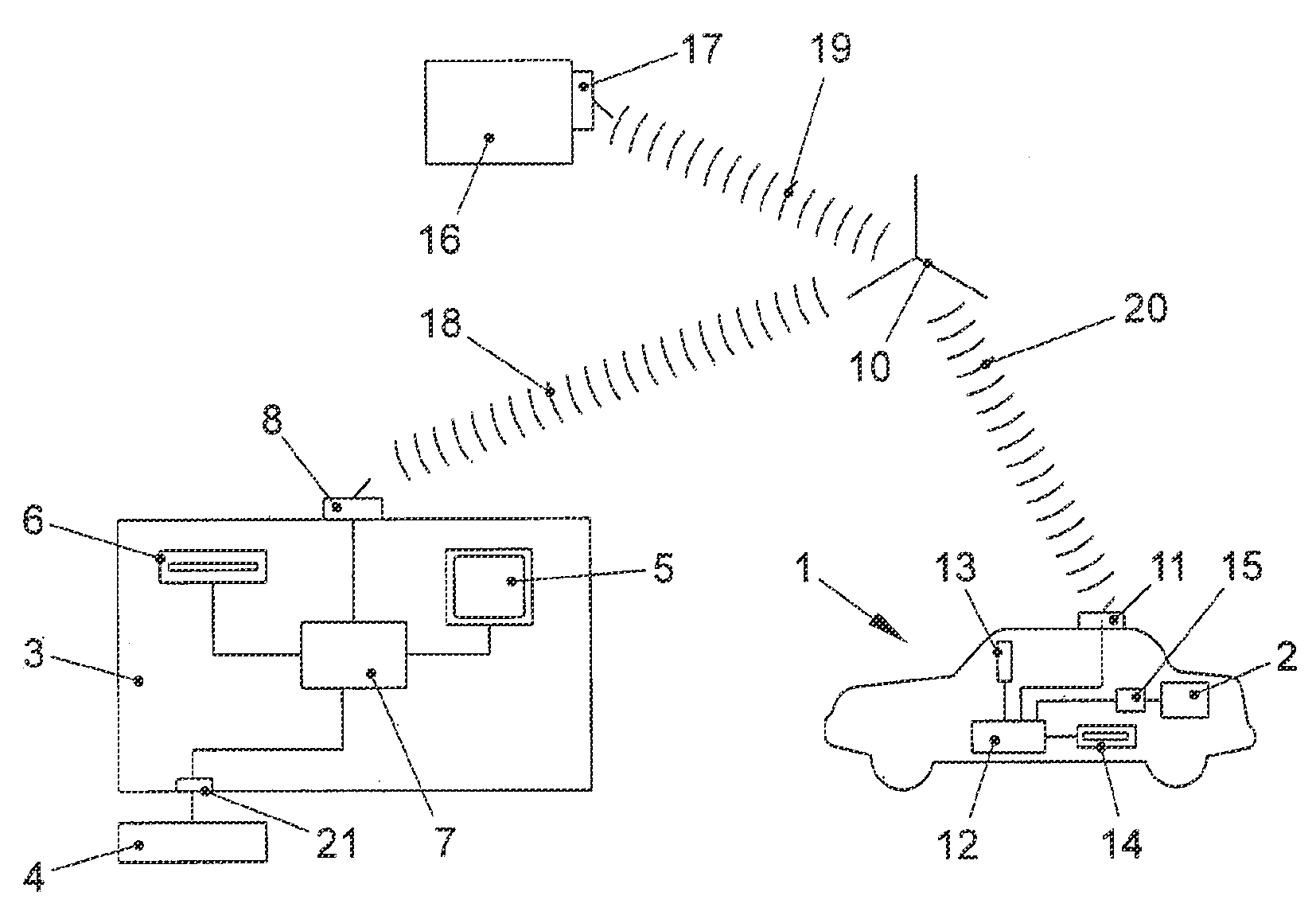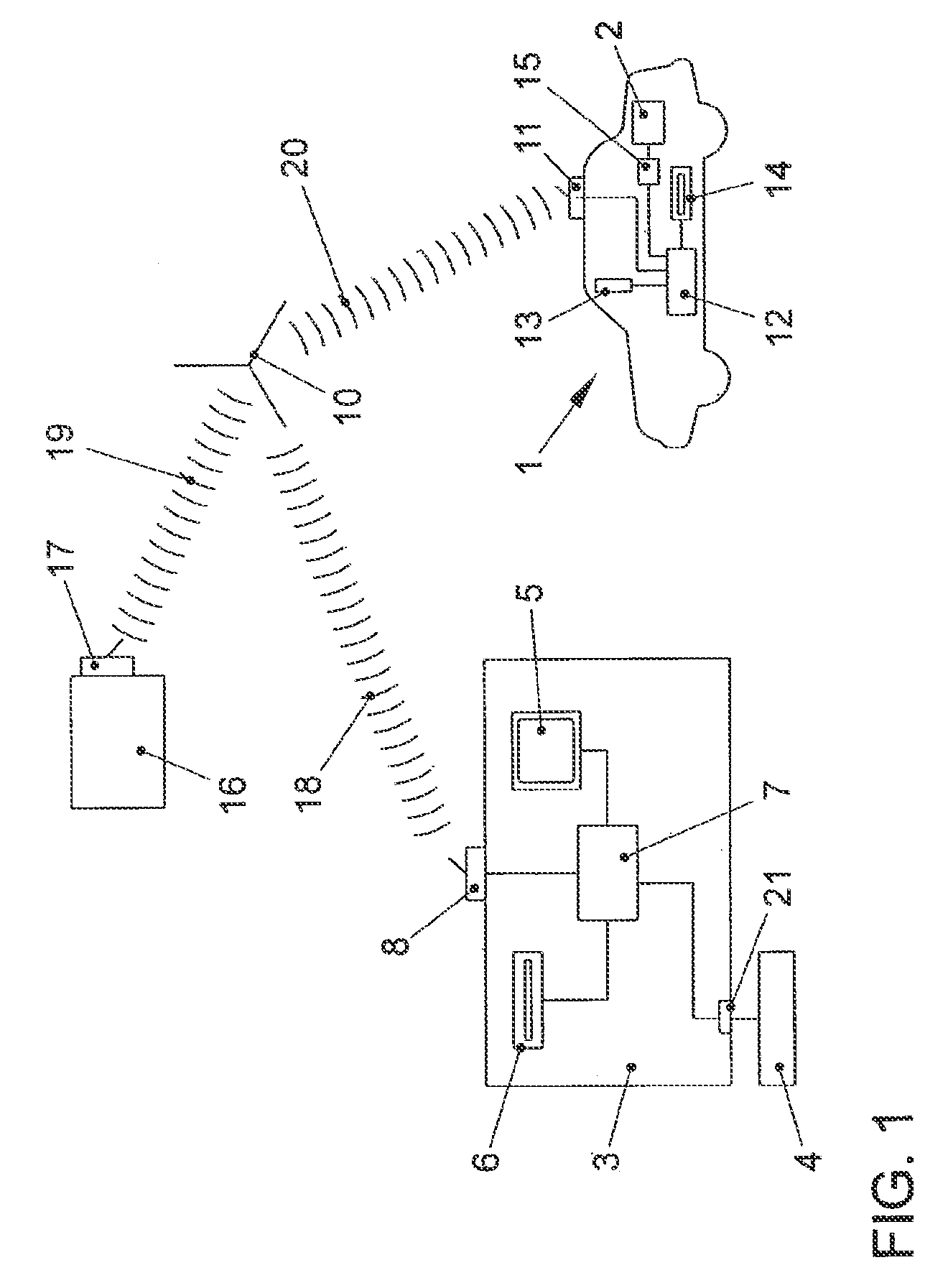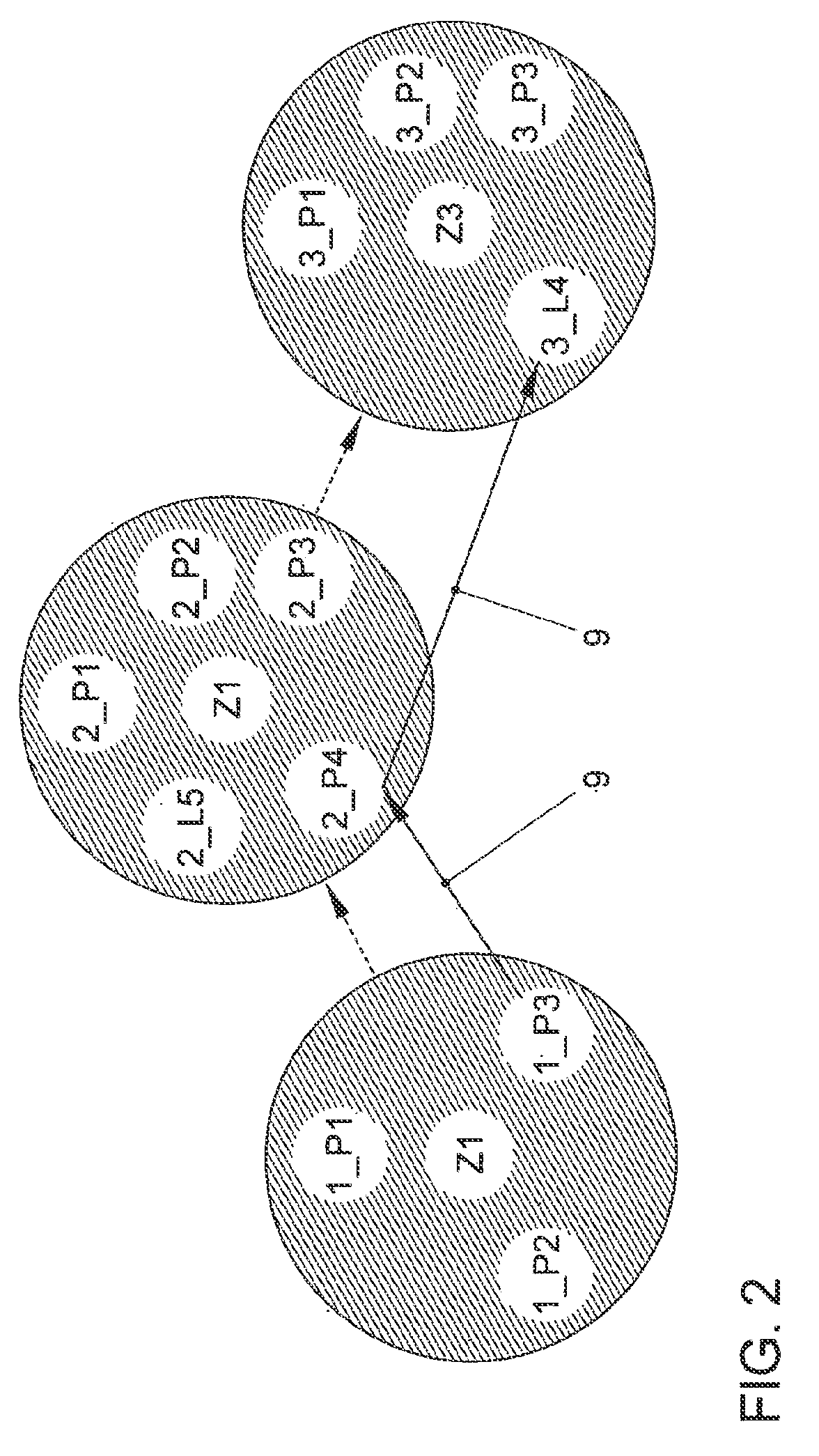Method and device for planning a travel route for a vehicle
a technology for planning a travel route and a vehicle, applied in surveying and navigation, instruments, navigation instruments, etc., can solve the problems of no longer reaching specific destinations in the destination sequence, energy consumption for powering, and projected energy consumption of internal loads of the vehicle, so as to facilitate and intuitively influence the route planning
- Summary
- Abstract
- Description
- Claims
- Application Information
AI Technical Summary
Benefits of technology
Problems solved by technology
Method used
Image
Examples
Embodiment Construction
[0065]The basic design of an exemplary embodiment of the device according to the present invention is shown schematically in FIG. 1. The device includes a vehicle-internal module and a vehicle-external module, which are able to exchange data with each other, at least intermittently.
[0066]The vehicle-external module may include a computer 3, which is connected to an input unit 4 via an interface 21. Input unit 4 may be a keyboard or a mobile device, via which data may be input into computer 3. Computer 3 further includes an arithmetic logic unit 7 which is coupled to a data memory 6 and a display device 5, as well is to interface 21. With the aid of computer 3, a travel route is able to be planned for a vehicle 1, as explained later with reference to an exemplary embodiment of the method according to the present invention.
[0067]The vehicle-internal module is accommodated in a vehicle 1. Vehicle 1 includes an energy storage unit 2. Energy storage unit 2 may take the form of a recharge...
PUM
 Login to View More
Login to View More Abstract
Description
Claims
Application Information
 Login to View More
Login to View More - R&D
- Intellectual Property
- Life Sciences
- Materials
- Tech Scout
- Unparalleled Data Quality
- Higher Quality Content
- 60% Fewer Hallucinations
Browse by: Latest US Patents, China's latest patents, Technical Efficacy Thesaurus, Application Domain, Technology Topic, Popular Technical Reports.
© 2025 PatSnap. All rights reserved.Legal|Privacy policy|Modern Slavery Act Transparency Statement|Sitemap|About US| Contact US: help@patsnap.com



